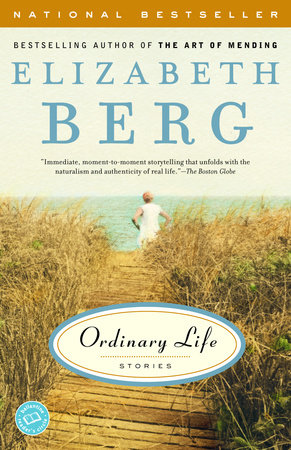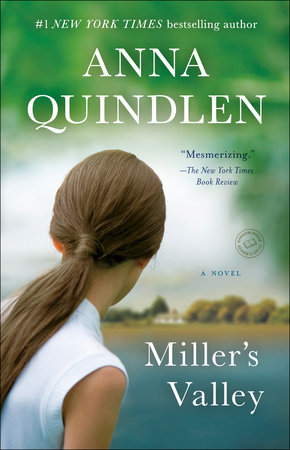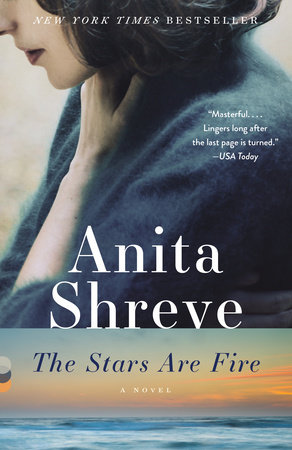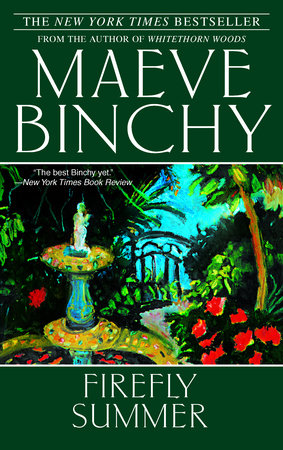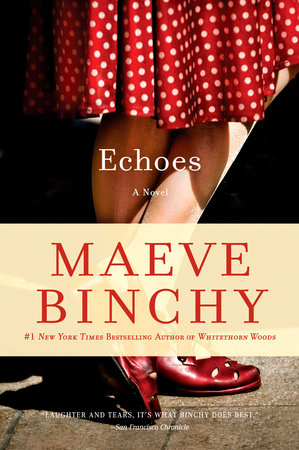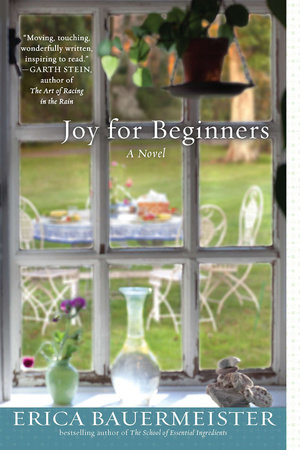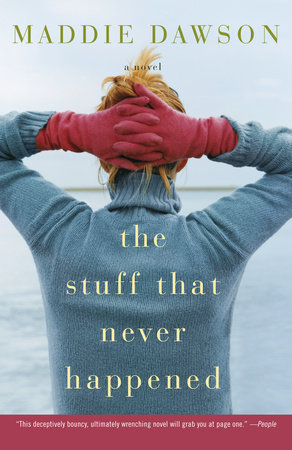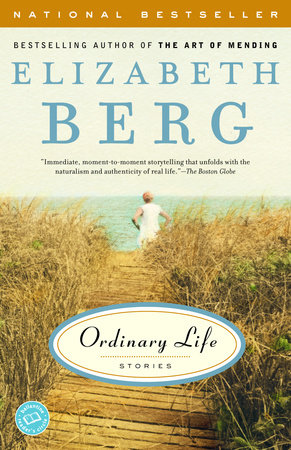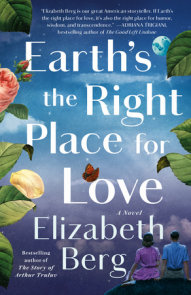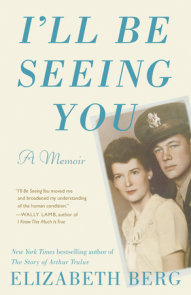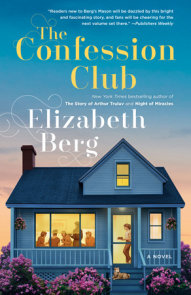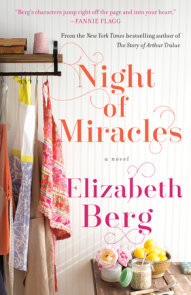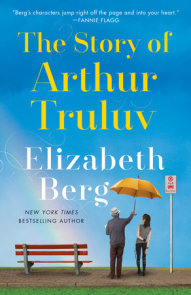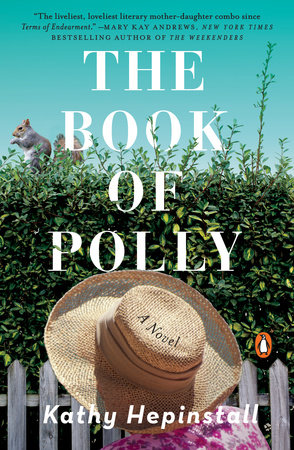Author Q&A
A CONVERSATION WITH ELIZABETH BERG
Michelle Huneven lives in California and is the author of Round Rock and Jamesland.
Michelle Huneven: Elizabeth, you say in your author’s note that these stories span a long period of time. How long? You also say that “Today’s Special” was the first story you wrote, but which is the most recent?
Elizabeth Berg: The stories span about fifteen years. The most recent story is “Martin’s Letter to Nan.”
MH: What makes a short story a short story to you (as opposed to, say, a sketch, or a novel, or a memoir)? How do you conceive of a story? For example, Sue Miller says that, for her, a short story is made of two disparate elements that connect in an unexpected way. Other people—the epiphanists—say a short story tells of a moment after which life will never be the same. How would you sum up your idea of what makes a short story?
EB: I guess the most succinct way to say it is that the short story is a photo; the novel is a whole album. What stories “are,” as well as what happens in them, depends on both the photographer (the writer) and the subject. I write a mix of types.
MH: Do you have a story all mapped out before you write, or do you improvise as you go along? What has happened in one of these stories that most surprised you?
EB: I don’t really like questions about the writing process, because the truth is I don’t know how I write. But I’ll do the best I can. Ideas come from life: what happens in mine, what I see happening in others’, mixed with a great deal of imagination. I might see a person in a grocery store and build a whole character and life out of what’s in her basket. I might read a newspaper story about a guy on a bus and build a family for him. I might get a phone call from an old boyfriend and it might raise a lot of “what if” questions that become material. I might watch people in a bar, overhear a piece of a conversation. Material is all around, all the time. Pots are boiling on four burners. The only thing I have to do is feel in the mood to cook, which I usually do. Once I get a vague idea, I let the story write itself. When I write, I operate as a writer and a reader both—I never know what’s going to happen. “Take This Quiz” surprised me for its solemnity—I thought it was going to be a funny story. “The Thief” surprised me for its thoughtfulness and its sense of complicity.
MH: These are stories about ordinary life as led by fairly ordinary people—that is to say your stories aren’t peopled with movie stars or aristocrats or geniuses or insane people. Is this an aesthetic choice? If so, why?
EB: It’s not so much an aesthetic choice as a personal preference: I find “ordinary” people more interesting.
MH: In certain still life paintings, simple common objects —a knife, a bowl of fruit, a loaf of bread, or a tea pot—are painted with such care and heart that they seem infused with life, with their own humble importance, even with spirit. It seems to me that through your straightforward, careful language you are after a similar effect in your writing—a kind of sacralization of the everyday—is this true?
EB: That is exactly it.
MH: Which is your most beloved story, and why? If they alternate, which is your favorite story today and what does it alternate with?
EB: In this collection, my favorite is the title story. I love the characters and the epiphany. In addition to that, any story that lets me talk about the ‘40’s is a good one for me. A close second is “Martin’s Letter to Nan,” which was really fun to write.
MH: Several stories (“Take This Quiz,” “Martin’s Letter to Nan,” “White Dwarf,”) remind me of a woman I know who claimed to specialize in making men talk, especially the strong, silent type of man. The problem, she said, was that once she got ‘em talking, she generally hated what they had to say. Do you like what your male characters have to say?
EB: I like it because I think it’s important. I believe many of the problems between the sexes come because of the lack of mutual respect. How do we resolve this? For me, honest dialogue is a good way to start, words that lead to each person seeing the other.
MH: Illness is one of your ongoing subjects in this collection, and in your hands, it seems like a place of exile and marginalization from ordinary life, a “departure from normal.” How do your characters reconnect with an ordinary life? Also, your ill characters are often as caregiving as their caregivers—I’m thinking of the mother in “Caretaking,” of Richard in “Sweet Refuge,” of the mother in “What Stays,” even the cancer-infected parakeet in “Departure from Normal.” What is it that your ill characters can bring to the healthy people around them?
EB: It is my belief, as well as my experience, that a bad diagnosis does separate you from others, from people who are normal (healthy). Of course, the joke, if you may call it that, is that any “normal” person is not safe from being ill themselves. The person expressing shock or sympathy over a friend’s diagnosis may themselves die from an illness long before their friend does. Or from an accident. Life is so fragile, so brief. And we seemingly work so hard at trying to ignore that. I think what ill people can bring to those who are healthy is a reminder to be grateful, to not to take things for granted. It is perhaps a bitter irony that those closest to death sometimes seem best able to enjoy life.
MH: Some of your characters forgive quite a lot—whether they’re asked to or not. George forgives Phyllis for her adultery. Kate forgives her cold, judgmental, sharp father (a feat!) in “One Time at Christmas, in My Sister’s Bathroom.” Several husbands forgive their dissatisfied, critical wives. Jane forgives her thief. Do you believe people in general are that forgiving? Why should they be? Is forgiveness ever inappropriate?
EB: I think forgiveness is extremely difficult in almost all cases. But I believe it’s vitally important. If you carry around hatred or bitterness against someone, who does it hurt more? I guess I would have to say that I don’t believe that forgiveness is ever inappropriate, which is not to say that the person forgiving doesn’t maintain her or his own integrity. You don’t have to give yourself away or deny your convictions in the act of offering forgiveness. But I think it’s good to try to get rid of angry feelings against someone—those feelings will eat you up inside. All that said, we are an imperfect species and we constantly screw up. It is not heaven here. Neither is it hell. Not on most days, anyway!
MH: You’ve written twelve novels and have published one story collection. What makes the novel more compelling to you than stories? Are you working on another book of short stories?
EB: I just happen to have focused more on novels. But I love the short story form and I am working on another collection. This is going to be mostly humorous stories. One of my favorites thus far is “The Day I Ate Whatever I &^$#(*& Wanted.”
